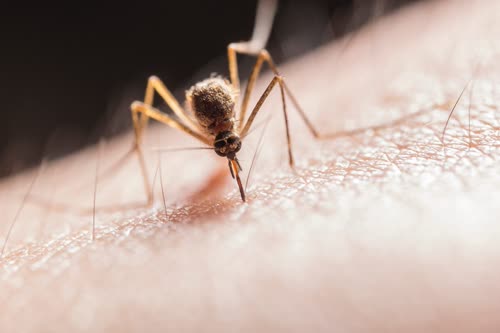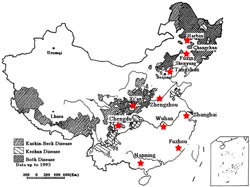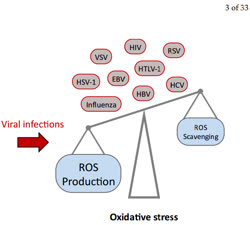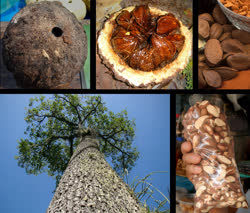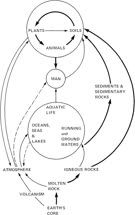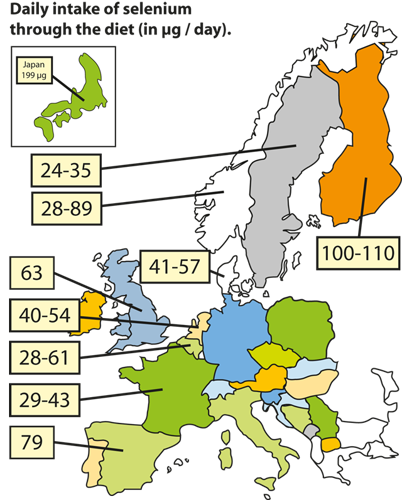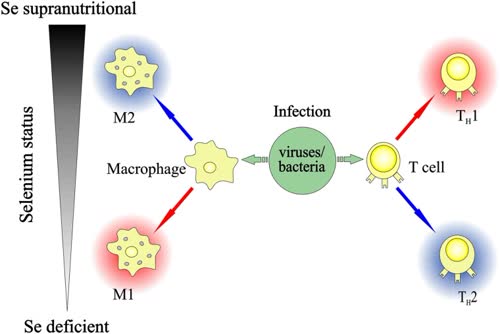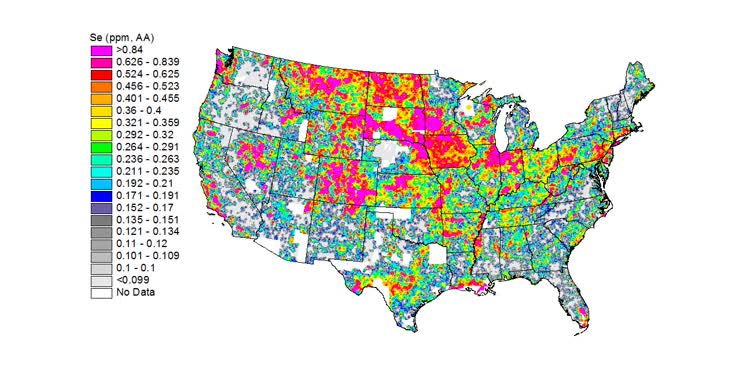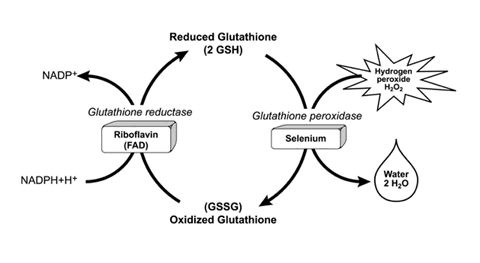|
Boosting serum Selenium
|
|
"98.7 μg/L of Se in plasma or serum are required to optimize GPx activity" - Stoffeneller 2015 "Selenium (Se) is a trace element essential to organisms,
from bacteria to humans. It plays a role as an antioxidant
at the cellular level, providing protection against free
radical damage and oxidative stress. In mammals, one
of the best characterized roles of Se is its incorporation
in the active site of different isoforms of glutathione peroxidase,
an enzyme that protects polyunsaturated lipids in
biological membranes [12]. At low doses, Se supplementation
has been shown to contribute to the antioxidant
response in rats infected with Trichinella spiralis [13].
Se plays a role in the immune system [14] and was shown
to potentiate vaccine induced immunity to malaria in mice
[15]. In mice, Se supplementation has also been found to
enhance the protective response to Toxocara canis larvae
[16], decrease coxsackie virus induced heart disease
[17,18], exhibit a protective effect against infection with
murine leukemia virus [19], inhibit infection with Cryptosporidium
parvum [20], and provide protection against
H1N1 influenza virus infection [21]. Se deficiency has been
associated with both an altered immune response and
increased lung pathology in mice infected with different
influenza virus strains [22,23], extensive cardiac pathology
in mice infected with a benign amyocarditic coxsackievirus
B3 [24], decreased immune response and higher susceptibility
of mice to C. parvum infection [25], and an altered
innate immune response to Listeria monocytogenes infection
in mice [26]. It is also interesting to note that in some
cases the altered immune response in Se deficient mice can
be beneficial. For example, Se-deficient mice were protected
from virus-induced mortality when they were
infected with a virulent influenza strain (A/Puerto Rico/
8/34) [22]. Furthermore, it was shown that increased dietary
supplementation with vitamin E and Se led to increased
tissue cyst number, tissue pathology, and weight
loss in mice during infection with Toxoplasma gondii [27].
Thus, Se supplementation or depletion could prove to be
beneficial, depending on the particular infectious agent
and state of the host.
|
|
History and examples of selenium use in fighting disease. In low doses Selenium is given in vitamin pills as an essential mineral. The optimal dose appears to be much higher than 100mcg, below that not much happens. The standard was lowered in the US in 2017 from 70 to 55.
|
|
The role of immune boosting agents on historical warfare. "On the European continent during the Franco-Prussian War of
1870–1871, the Prussian army of over 800,000 soldiers was vaccinated
every seven years; these Germans lost fewer than 300 out of 8,360
infected. In contrast, the French army commanders who did not believe
in repeated vaccination lost over 23,000 soldiers to smallpox and more
than 280,000 became infected." - Viruses, Plagues and History (2012)
 |
|
Direct evidence Selenium mitiates Ebola
|
|
Keshen Disease and the analogous role of Selenium The first disease found that had the selenium factor as the cause of human lethality. In simple terms if you catch this virus and you live an area of low selenium then if you have low selenium or high selenium, you'r going to get the sniffles. Or you may get nothing.
But if you live in an area of high selenium, and you have high selenium in your blood the you won't be infected but if you have low selenium you my die.
|
